Media | Articles
Vision Thing: Feel the Sehnsucht
Isn’t strange how the Germans, of all people, have within their language some words which manage to capture something universal that doesn’t translate directly into English? Schadenfreude, for example—the joy experienced in the misfortune of others. I have recently learned that sehnsucht is not just the title of bombastic metal pounders Rammstein’s second studio album, as it means a melancholic yearning or desire for something unattainable.
And that’s something I used to feel regularly thumbing through expensively imported American car magazines in the ’90s.
It’s been said that in our interconnected world, anything is available from anywhere for a price with just a few taps. Really? I’ve yet to find a U.K. supply of the hazelnut coffee creamer I enjoyed in America, and I can’t find a replacement aerial (that’s an antenna, for you stateside readers. —Ed.) for the Mondial either, so I’m not sure that’s totally true. And what’s true for me also applies to you.
Thanks to the 25-year import rule, no amount of money will make any of these design picks legal to drive in the United States. Your U.K.-based author, however, can go to a specialist importer today and, for £69,950 (ahem, $84K) drive home in a 2021 Ford Bronco Outer Banks.
Alpine A110 (2017–present)
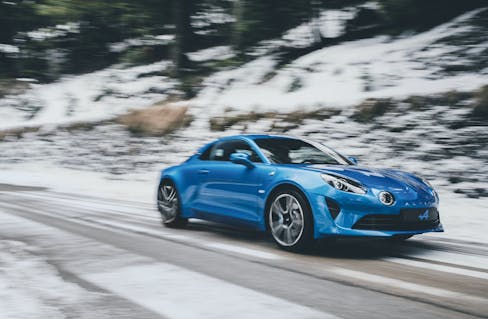
Any decent French mid-range vehicle from the last fifty years or so will have certain attributes. Chic design, a lusty torque curve, and well-damped, long-travel suspension. When the Citroën Berlingo van first appeared at the courier company I was working for in the late ’90s, the lucky drivers who got one marveled at its ability to keep up with much hotter machinery on a bumpy British B road, riding the turbodiesel torque between third and fourth gears.
Marketplace
Buy and sell classics with confidence
Jean Rédélé had been making go-faster Renaults for years and rallying them with a not-inconsiderable degree of success. In conjunction with famed Italian designer Giovanni Michelotti, the pair utilized the then-revolutionary material of glass-reinforced plastic (GRP, a.k.a. fiberglass) to come up with a series of small berlinette (coupes) culminating in the original A110 of 1963. This lightweight yet immensely strong car proved to be a formidable rally weapon; after Renault acquired the company in 1971, it won the inaugural World Rally Championship in 1973.
There were later models, the A310 and 610 (which morphed into the ’80s GTA, a kind of French 911) but it’s the original A110 from which the new one takes inspiration. Launched in 2018 and just tweaked for 2022, the first thing you notice upon seeing one in the metal is just how compact it is. A handy 7 inches shorter and 600 pounds lighter than a Cayman, the modern A110 is tiny.
But don’t think this is a compromised widowmaker like an Alfa 4C. Coupling that traditional French loping ride with a boosty 1.8-liter four-cylinder engine swiped from the Megane RS, turned 90 degrees, and stuffed behind the seats, the Alpine pours itself down the road. Think “French Lotus” with better luggage accommodation—it’s like a Boxster/Cayman with front and rear trunks.
Better yet, the Alpine is sensational to look at, with proportions that are muscular but not aggressive and with wonderful detailing. The spotlights are an object lesson in how to integrate additional illumination, and the subtle Tricolore badges inside and out are a nice touch of French pride. The 21st century A110 captures the spirit of the original car without being beholden to it. It’s priced sensibly at £51K—about $61K, but worth noting that the first number is an out-the-door price including taxes. If I were to have one of these, I’d even forgo my traditional black for that beautiful Alpine Blue, a color for which car the looks tailor-made.
I would advise you to get the base version, as it does without the carbon-fiber aero bits with which the spicier versions are afflicted. If it’s good enough for Gordon Murray, it’s good enough for you and me. But I suspect the reason you can’t buy one in the first place is because Renault itself has no dealership presence stateside. (Homologation nonsense isn’t the issue, because the Alpine is also available in Japan and Australia.)
Jeep Avenger (2023)
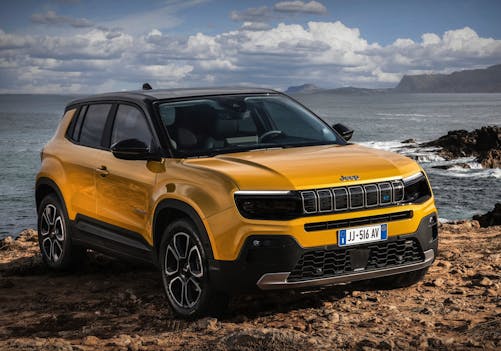
Now we’re getting in mirror-universe territory: Europe getting a Jeep that’s not available in the U.S.? More earth shattering than that, that Jeep is electric-only (for now—we’ll come back to this point).
Since the YJ Wrangler and XJ Cherokee spearheaded about the only successful European invasion of a U.S. brand nearly thirty years ago, Jeep has slowly but surely become a sort of semi-premium, slightly upmarket brand. Limited availability and heritage to die for has kept prices firm. Since recovering from the disastrous Cerberus years, Jeep has quietly but consistently turned out some handsome and credible vehicles. Now part of the bewildering Stellantis empire (which still sounds like an abandoned NASA white-paper project), Jeep has got its hands on Euro-specific platforms (courtesy of Peugeot/Citroën) and the first fruit of this intercontinental marriage is the Avenger.

Confession time: I have a soft spot for the Renegade, even though the D pillar is not quite right (it needs to angle forward a bit more, I think) but its compact size and cheeky ruggedness are fun, and we need more of that. The Avenger is about 6 inches shorter than the Renegade, sitting it squarely in the Euro B (in the states, the sub-compact) class.
What I like about the Avenger is how it keeps the modern Jeep design cues and applies them to an even smaller vehicle without becoming an overwrought mess. It has the seven-bar grille, the X-graphic taillights, and pronounced wheel arches, but each element is used in a way that’s appropriate for the Avenger’s smaller size. Designers made an effort to push the wheels to the corners so the vehicle has half-decent approach and departure angles. I particularly like the daytime running lights, which feel like a successful update of what Jeep tried on the pre-facelift KL Renegade.
Jeep is claiming a range of at least 250 miles for the Avenger, which feels optimistic for a 54-kWh battery. But internal-combustion (ICE) versions have been spotted testing. This sequence is known as design protection or, to the layman, as “hedging your bets.” For now, an EV is a non-starter for people without home or at-work charging options, so the inclusion of an ICE model is a prudent move.
Suzuki Jimny
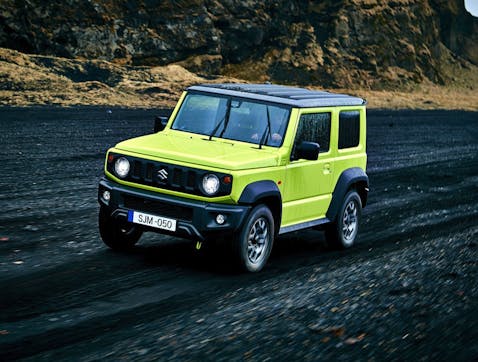
If Suzuki can build a new body-on-frame, solid-axle SUV, why couldn’t Jaguar Land Rover do the same for the 2020 Defender, cried the internet? A couple of good reasons. Suzuki is a much bigger company than JLR, which isn’t even in the top 20 OEMs worldwide. The second-generation Samurai was in production for 18 years, and the third-gen Jimny for 24. When you’re building a car for that long, you don’t need as much margin.
Customers who actually need real off-road ability know weight and size are the enemy. The Jimny is one of those cars whose design is an explicit function of its purpose. A totally honest and unpretentious car ready for work and play. There’s hardly any attempt to smooth off the rough edges of its capability in the name of comfort.
The flat body side and clamshell bonnet call back to the earlier SJ Samurai, but this latest Jimny is not really a retro design as I’ve seen it described elsewhere. It’s simple, functional, and modern without leaning into the cuteness factor that affects some Kei cars. It looks tough and capable without being overly aggressive. Back in the late ’80s and early nineties the SJ and its Vitara (Chevy Tracker) sibling became something of an inner-city fashion accessory, and the new one has done the same for the rural set. There’s a least two living in the frightfully well-to-do rural town where I live (along with at two Alpine A110s I see regularly).
Suzuki has managed the same own goal as Ford did with the Maverick, as both manufacturers massively underestimated demand. They simply could not build the vehicles fast enough. But Suzuki had an even bigger problem.
The Jimny’s bluff shape and draggy drivetrain meant the truck ran afoul of European emissions regulations, causing it to be withdrawn from the market in 2020 after only two years on sale. The solution, reintroduced for 2022, was to yank out the cramped rear seats and install a cargo partition. In the eyes of the law, these changes turned the Jimny into a commercial vehicle, which doesn’t have to meet the same emissions standards.
The Jimny’s list price is about £20K ($24K) but try finding one for that. Like the Maverick, delivery-mileage examples are going for a significant premium and are still in short supply, proving that a vehicle that nails a specific use-case will always be popular.
Dacia Duster
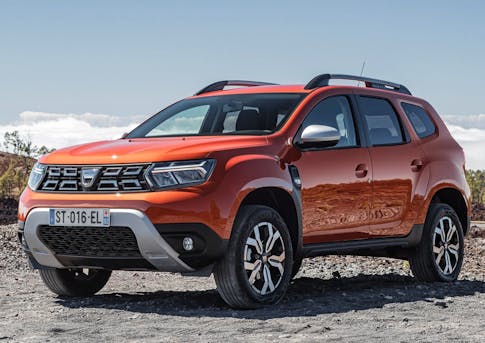
Dacia is a Romanian company that got its start in 1966 by buying up old Renault tooling and selling obsolete Renault 8s and 12s domestically under license. Since 1999 it’s been part of the Renault empire proper, though it remains Romania-based, selling around 500K vehicles annually.
Slotting into the unpretentious, value-for-money market occupied by Škoda (before the Czech company’s portfolio began getting expensive), the first Dusters appeared in the U.K. in 2012 in Whirlpool White with steel wheels and unpainted polypropylene front and rear bumpers for the eye-catching price of £8995 (a little under $11K).
Buyers walked into Dacia showrooms in droves and promptly walked out wondering where the touchscreen and automatic transmission were. Realizing it had gone a bit too minimalist in its approach to options, Dacia soon revised the Duster with trim uplifts and additional equipment.
Want to tell whether company is gaining self-confidence? Watch when it goes through a rebranding exercise. Dacia has just updated the Duster for 2022 and, in a world in which mundane items are seemingly increasing in price by the day, the Duster is still a motoring bargain, starting at £16K ($19K). How did the company do it?
Economies of scale help. The Duster is sold all over the developed and developing world (sometimes as a Nissan or a Renault) to the tune of well over 200,000 units a year. It’s based on an old Renault platform, long since paid off. But take a closer look at the exterior. Notice how the doors are a one-piece stamping with no trim that rolls up to meet the roof. This lowers the part count on the door and saves a separate cant rail and A-pillar stamping.
Tarting up cars from the developing world for Western markets is fraught with risk. The infamous Ford EcoSport took TWO thorough reengineering jobs and was still sub-par. Renault’s genius with the Duster was bringing it to the market as a Dacia, thus managing expectation. If the Duster flopped, the mothership wouldn’t be affected.
The Duster is not the most sophisticated device on the road, but it’s not pitched as such. Rather it’s a competent, well thought-out, and cleverly designed car that shows parsimony doesn’t have to mean misery.
Honorable mention: Peugeot 208
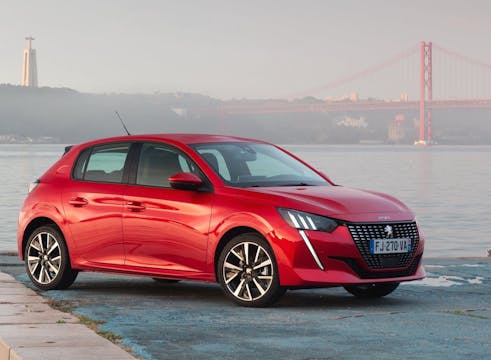
It’s only taken it twenty-odd years, but Peugeot finally has a baby hatch to rival the Gallic flair of the seminal, Pininfarina-designed 205 (see below). Any attempt to replicate this ’90s classic was doomed to fail and so it proved. The 206 and 207 were bulbous and piscine in their appearance, and the first-generation 208, with its weird C-shaped taillights, not much better. But the current 208 recaptures some of the 205’s charm and lightness of touch as much as is possible in a modern car.

Presenting a contemporary update on the trademark 205 C-pillar shape with a striking down-the-road graphic, it smooths the faceted, perfume-bottle look of the SUVs in Peugeot’s range to produce a more rounded, homogenous form.
It’s definitely a grower not a shower—another car I wasn’t totally sold on until I started seeing it on the road. Sadly there’s no GTi these days (blame emissions regulations, again) and the interior carries on another French tradition by being stylish but slightly odd.
In another demonstration of what can be done with a common platform, the 208 shares its under-garments with the Jeep Avenger.
Honorable mention: Honda e

From willfully French to “it couldn’t come from anywhere but Japan.” The Honda e does away with Japanese busyness and cluttered design for a simple, smooth, but technology-led look that contains hints of humanoid robot in its front and rear graphics. Available only as a rear-wheel-drive electric vehicle, the Honda leverages this layout to provide a turning circle worthy of a London black cab, making it perfect for the city-center assault course.

Another technology highlight is the camera mirror system. At first look it appears like a design solution in search of a problem, but in reality, the apparatus works very well and provides a benefit in both aero and reduction in wind noise.
The e might be small car, but like a lot of EVs, it’s not a cheap one. Where other OEMs have concentrated on range, Honda has gone in the opposite direction and designed for a premium experience. Although the interior rivals a Best Buy for sheer number of screens, the important stuff like HVAC and stereo retain hard controls. The range admittedly isn’t great, but this aesthetic could work just as well on the next Fit or Civic.
U.S.-market outliers like pickup trucks and muscle cars aside, there is nowhere near as much market differentiation across the world as there used to be. Increased development costs and coalescing tastes have seen to that. I’ve focused on specific cars that are not available in the U.S., rather than the sort of trim and model variations that forums like to argue over. Think of it as my revenge for your chucking our tea in Boston harbor all those years ago.
Check out the Hagerty Media homepage so you don’t miss a single story, or better yet, bookmark it.

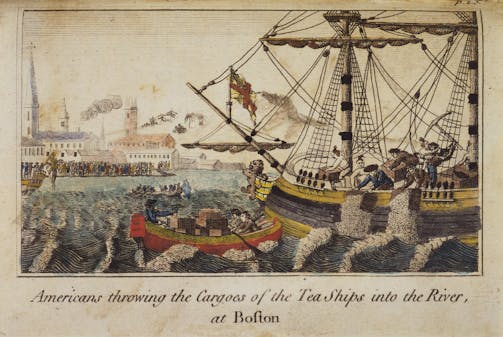










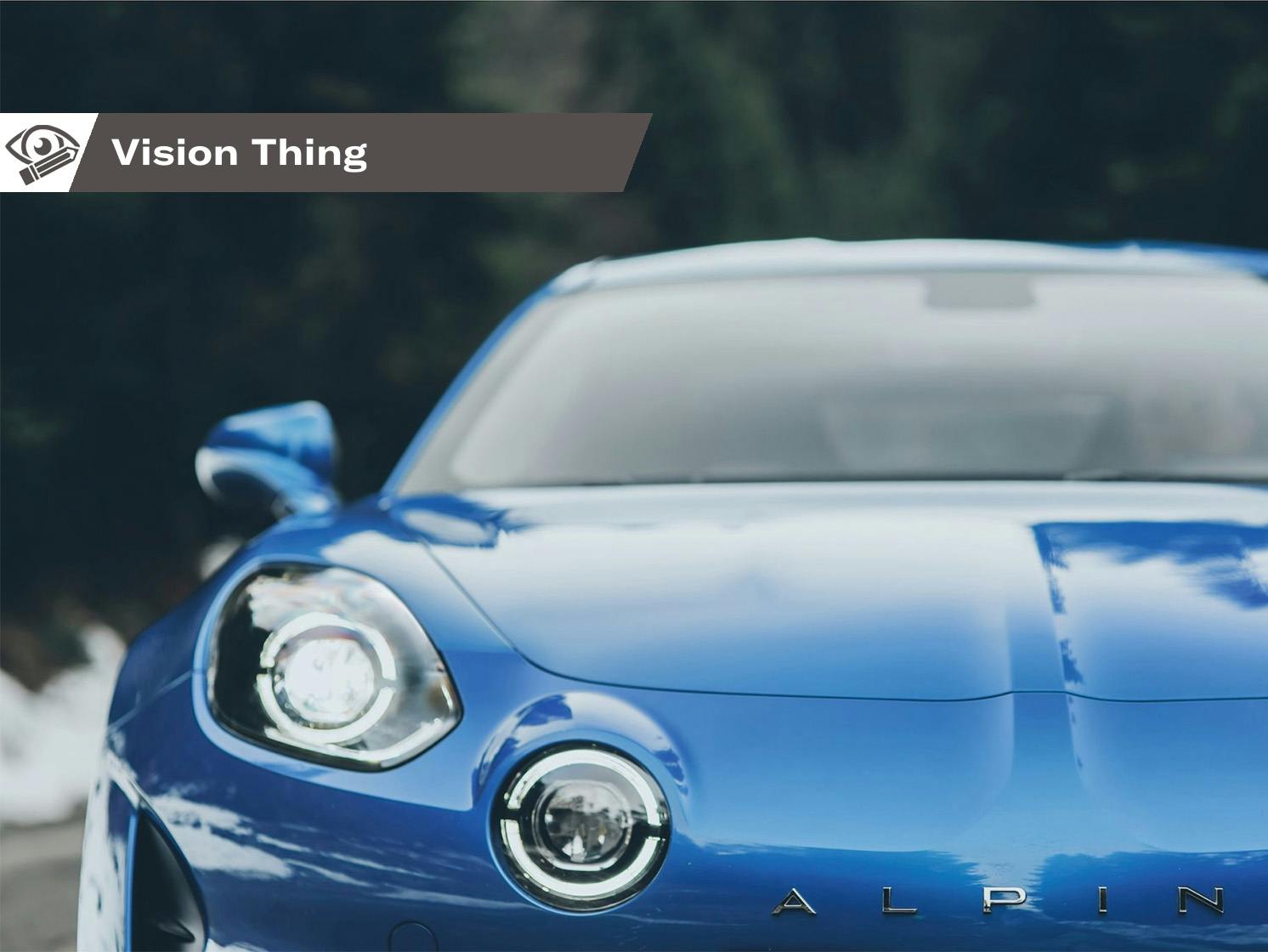
The Alpine always struck me like hard cider -really good, but still somehow never the first choice. If I was shopping it that class, I would be content with a Lotus Exige, irrespective of the convenience of having it always been on sale in the US. As for the unsurprising precision of the German language, my favorite (favourite?) Is the distinction between “essen” and “fressen”. You do have to admire the passion for nuance.
Click and Clack, (remember them), said: ‘only buy a French car if you live in France’ – one of their rules of car buying.
They also say dont buy a car made on a monday or a friday.
None. None appeal to me. I did make note of this comment per the e-Jeep: “But internal-combustion (ICE) versions have been spotted testing. This sequence is known as design protection or, to the layman, as “hedging your bets.” Wonder if this ever crossed the minds of stateside auto manufacturers.
“The French copy no one…and no one copies the French.”
Amen brother, Amen.
Hah, probably an element of truth as that’s where parts availability and expertise will be greatest!
I was devastated when I learned that the Alpine A110 wasn’t coming to America and wish at least that Nissan would either offer it as a Z replacement or pull a Subaru/Toyota GT86 rebadge. The only thing dulling the pain is that it’s only offered as an automatic.
None of these models really appealed to me. They all were second rate Euro cars.
Even the Jeeps were warmed over Fiat models for the most parts. The Honda was some oddity form Japan known for oddities at times.
I’d be interested to know why you consider them second rate?
I don’t find them interesting, I do not find them stylish and they look like many other cars in the parking lot.
They do not have distinctive styling. They are really nothing special.
This is not like cars I could not find a as good or better model here.
The Alpine could be special if it did not have that Toyota looking bug eye look of the 90’s.
Just my personal take. If you like these that is fine. I just would not be upset if I never see one of these in America.
I agree. In fact I hope I never see any of these cars. Ugly! Just my opinion.
I agree with you 100%.
Different and kitschy is fine, but not a basis for a billion dollar marketing win.
Completely agree…
Ford imported the Escort and the Mondeo for sale in the US. Mercedes and Fiat purchased Chrysler to gain access to the American market for their European vehicles. Where are these Euro-based vehicles now?
I’ve seen plenty of Fiats in my neighborhood over the last seven years, and Mercedes never went away, as far as I can tell. So, the answer to your question of “where are they” seems to be “New Jersey.”
Holden UTE for me
The US market Escort ended up sharing nothing with the Euro version. The Mondeo/Contour/Mystique were conceived as a world car, but due to the fact the American versions came to market a year later they had significant re-engineering for the US market. I’ve covered these in Vision Thing a while back (the world car fallacy).
This isn’t really an article about cars I think should be available stateside, more about some of the good stuff you don’t get.
You mean like the Chrysler 300, Dodge Charger and Challenger, Jeep Renegade and Cherokee? Never heard of ’em. Also Dodge Dart and Chrysler 200. Nope, never happened.
Also Adrian we are not one world in the auto enthusiast. We all have different road, gas prices and expectations. Same for Asia and Down under as well Europe..
Some cars cross over many do not. Just the way it is.
Small FWD hatches in the United States are just not a big deal and we do not get excited about them.
Now I am not totally against hatches. I owned a HHR SS. I hated FWD, I hated HHR models. but I drove the car and it was a blast to drive. I had 300 HP with my tune at 23 PSI of boost.
I only wished it was RWD.
This isn’t an article about cars I think should cross over. It’s about the good stuff you don’t get. I do constantly mention the peril in trying to cover vastly difference market requirements with one model.
I agree, why not third or forth rate. LOL
I don’t see anything here exciting.
I totally agree with you. Rather have good old American muscle Car.
Too bad they do not tell you. The price of the Honda E it will be the commuter car of electrics which will be the volkswagon of the 21st century
Unless there are better batteries electrics just don’t work. Read the story about the brother/sister driving a Tesla from Orlando to Kansas in the December cold snap. Once they hit the cold weather they got 90 min. driving time on a full charge. A lot more time spent charging than driving!
So, there is a dealership here in the Oklahoma City area, Iconic Motors, that always has new-ish Suzuki Jimnys for sale. I know they come in from Mexico, but I’m not sure how people register them (I’m assuming they go unregistered as farm trucks). As of this writing, they have a 2022 automatic gasoline Jimny for $44,500…and in the same shade of green as your example.
https://www.iconicmotors.us/details/used-2022–suzuki-jimny/90811604
Wow, that’s £37k which is an even bigger premium than they fetch in the UK. Clearly we’re in the wrong business! I have thought that in the US unregistered work vehicles, or dedicated off roading are something they’d be good at, but at that price you’d really have to want one.
What you probably don’t know is that depending on the state, owning a dedicate off-road vehicle is a pain.
Examples: a UTV or Ruxor are legal to drive on the streets in AZ (with a horn, mirrors and other minor changes), but they are fully illegal on roads in Colorado, with a few exceptions.
Most NF roads require insurance coverage too.
So if you’re going to a place like Telluride, you have to haul your rig to the trail head, then somehow get it to the end on a trail like black Bear, or try to run a loop. Also – parking is limited, so there’s that.
The alternative is a street legal rig and drive it from place to place.
Yeah, I know someone who has a Roxor and it works for him perfectly. But yes, very state and circumstance dependant.
If I wanted to peruse used car offerings in Europe, what’re the best sites?
It depends if you mean mainland Europe or the UK. In the UK, Autotrader (we have our own version) for mainstream stuff or Pistonheads for sportier and interesting cars. For classics, Car and Classic covers both the UK and the mainland. As for mainstream second hand stuff on the continent, I couldn’t say.
Other than the Alpine none of these would interest me, especially those Jeeps. Europe can keep them.
I honestly think that Peugeot could have a successful re-entry into the US market, it’d just take a whole lot of research and marketing.
It is all about price. If they can compete price wise yes but there is so little love or even knowledge of Peugeot. They should have push their models before it became expensive and difficult to sell a diesel.
and build a dealer network.
“it’s like a Boxster/Cayman with front and rear trunks”
The Boxster/Cayman have front and rear trunks last time I looked under the hood and hatch of my Cayman.
Right, so it is like a Boxster/Cayman.
If he wanted to write, “it’s like a Boxster/Cayman EXCEPT it has front and rears trunks,” I am sure that is what he would have stated.
Yes that was the point I was trying to make. That could have been worded better. I had a Boxster and thought it was incredibly practical.
As I don’t wish for anything even close to what’s listed above, I am quite happy. Now if your talking 87 GNX or 65 Riviera Gran Sport that’s a different story!!
Both lovely cars, but not really the subject of this particular instalment!
Honorable mention…..Volkswagen Scirocco.
Would have been included if it was still available. Sadly died in 2017.
I have a soft spot for French cars, probably because I never owned one. The current Alpine A110 is top of my list, and I’ve always loved Pininfarina’s Peugeot 205 GTi design, perfection is a compact hatchback. We really should get the Alpine A110 here in the states, it’s a first-class performance car, and maybe the Peugeot 208.
None of any interest to me. How about Porsche, Camaro, Chevelle, Mustang, Demon, Corvelle, etc. is what I personally think people are lusting for.
I want one of the original 1971 Mustang fastback with the 351 that they only made 1800 or so of. Now we would be talking 😎
We have enough ugly, slow, cheap imports now. Hope they stay over there.
Absolutely love the ‘71. Mach 1 on dog dish steelies please.
I had to recheck cuz I thought I got the wrong article. There isn’t a one of those cars I’d even care to own! Rather poor story I thought!
the Peugeot 208 should have been shown in the metallic burnt yellow colour which is fabulous.
Want to find anything : the Parking is great.